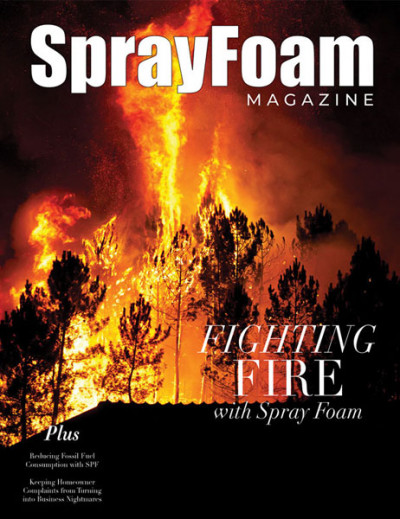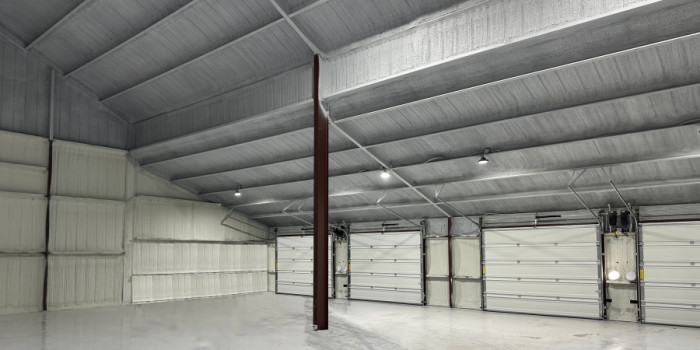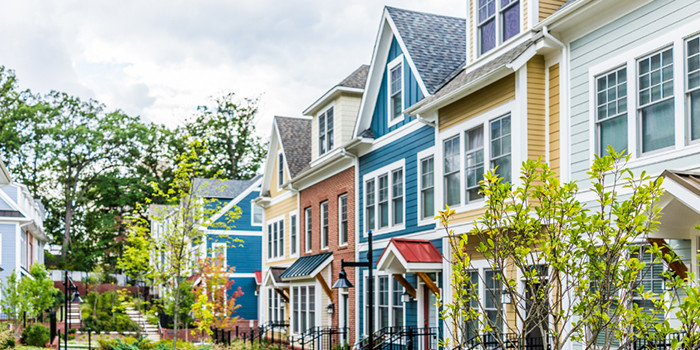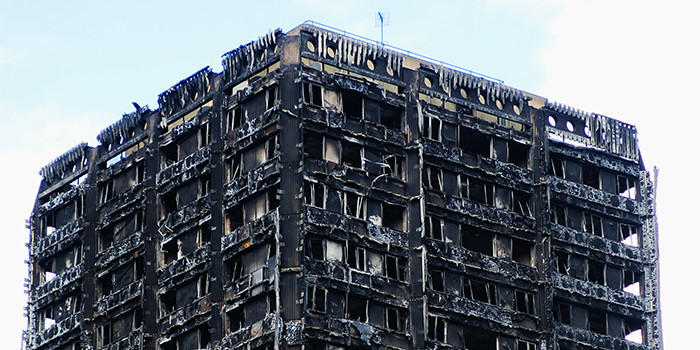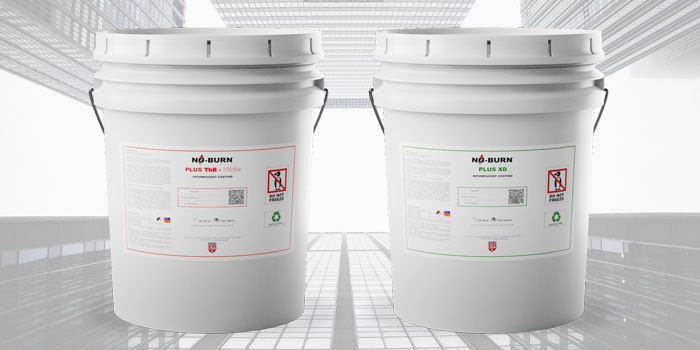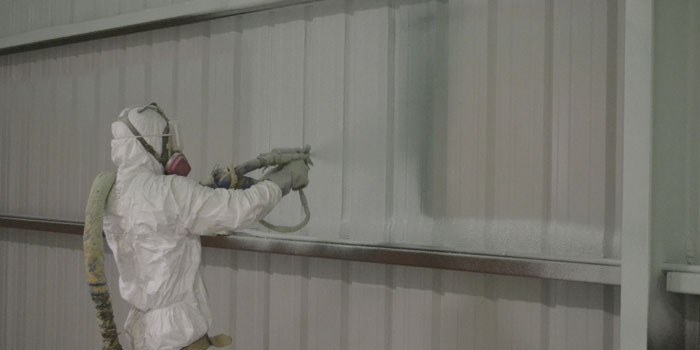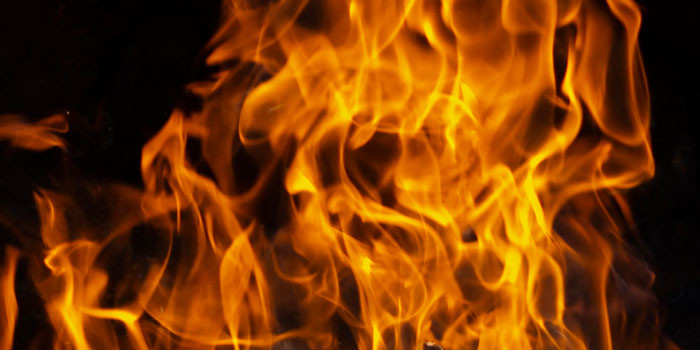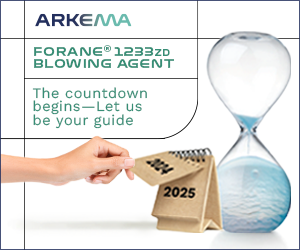Architects Specifying Foam for Fire-Resistant Homes
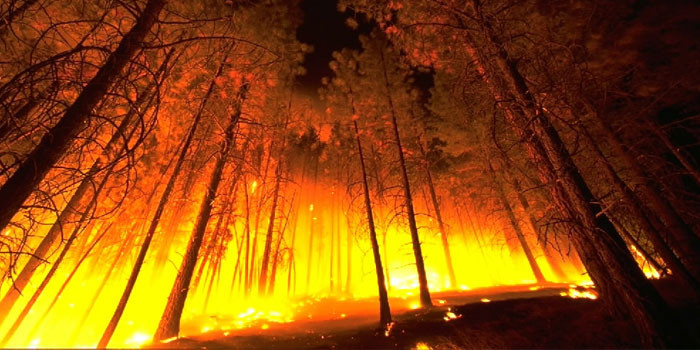
SANTA ROSA, CA – November 4, 2019 – It was a miracle. Howard Booster's family home in Santa Rosa survived the raging flame front that devoured nearly his entire neighborhood around 4 a.m. Oct. 9, 2017, amid the Tubbs Fire, among the deadliest and most devastating infernos in California history.
Only two hours after the fire passed, a neighbor sent Booster a video showing his home of 35 years standing amid other houses that had been turned into piles of ash.
Booster diligently kept the expansive grass field surrounding the house cut short for fire prevention and he assumed the strategy worked.But when he returned later that day, he found nothing.
"The ground was entirely black," Booster said. "If you took charcoal and painted everything with it, that's what it looked like. It felt like you were on a movie set for a movie about World War II in France. It was France 1942."
Fire officials later told Booster that while flames didn't engulf his home from the outside, hot embers likely flew into the soffit vents, the holes in the wood under the roof allowing an attic to breathe. The property burned from the inside.
Nearly two years later, Howard and his wife, Merritt, are rebuilding in a way to avoid a repeat of the disaster.
They're part of a small yet growing number of people building homes with a design and materials to resist fire, SF Gate reports.
The Boosters' new home will have a metal roof and and it won't have an attic or soffit vents.
Napa-based architect Brendan Kelly says it will be "impregnable" using prefabricated steel framing wrapped in noncombustible insulation from Canada-based homebuilding company BONE Structure.
"When a very hot, fast-moving wildfire moves through a zone, the point is the building is more secure so it doesn't allow embers to get into nooks and crannies where they can combust," says Kelly of Kelly + Morgan Architects. "Eliminating things like vents in a BONE Structure house is easy because of the way it goes together with steel and spray insulation."
The home's exterior will be paneled in a thick, engineered cedar product.
"The material has been tested by Cal Fire," Kelly said. "It gives you time before a fire gets into the building. It gives you time for the fire to move past the building so you can seek safe refuge. It takes a large amount of sustained heat to combust it. It's less flammable because of its thickness."
Booster said building with materials that are sustainable, long-lasting and fire-resistant will cost about 30 percent more than it would have if he had chosen a typical wood-frame design.
Wildfire is an increasingly serious issue in California, with fires growing bigger and becoming more frequent and destructive. Fifteen of the 20 largest fires in the state's history have occurred since 2000 and tens of thousands of homes have been destroyed.
The numbers from these major conflagrations are staggering.
Sweeping west from Calistoga into Santa Rosa, the Tubbs Fire alone destroyed more than 5,600 homes.
A year later, to the north in the town of Paradise, the Camp Fire torched nearly 19,000 buildings, most of them homes.
Many of the homes impacted by wildfire in California are built in what's called the "wildland-urban interface," meaning they butt up against open space overgrown with foliage that fuels fires.
As many as 5 million homes in the state are located within the interface, and nearly 200 communities housing 3 million people have been designated as "very high fire hazard severity zones" by the California Department of Forestry and Fire Protection.
The state has guidelines for building within these more fire-susceptible areas, and they're becoming increasingly strict.
"You have to use materials that offer at least one hour of fire resistance," said Sara Harrison Woodfield, a Santa Rosa architect. "No trellises that easily catch on fire. No vents that embers can get into the attic through."
But while homeowners in certain areas are now required to build more smartly, some are going above and beyond to use designs and materials that can resist flames for far more than one hour.
Woodfield said many clients are choosing what she calls "solid wall construction" instead of traditional wood framing for a higher category of fire resistance.
"There are a lot of products where you can have a solid wall, where you can have concrete on the inside and foam insulation on the outside," Woodfield said, who has been working as an architect in the region for 30 years. "It's a form of foam and then they pour concrete inside. And then you can put stucco or siding on the outside. There's nothing to burn there. You're not going to burn through that wall. It's almost fireproof."
This is just one option. Another is a where homebuilders have foam panels within steel grids and as they put the panels together, they blow concrete on them. She said a company called Tridipanel makes these and they're fire resistant for at least up to four hours.
"I know for a fact one of these Tridipanel houses was in the Lake Country Fire [2015]," Woodfield said. "They didn't lose anything except maybe some windows."
This house may have survived, but any expert will note that no house is completely fireproof.
"It's really dangerous to talk about fireproof buildings," Kelly said. "The only fireproof building is maybe a concrete bunker. There's a weak point in every building. Glass melts. Steel melts."
Referring to the Camp Fire outside Chico, California, in 2018, Kelly added, "I was in Paradise with the Office of Emergency Services doing home inspections, and it was pretty clear that steel cars melted sitting outside when the firestorm came through."
While architects and homeowners are working together to build flame-resistant homes, experts agree one of the best ways to slow an inferno in its tracks is landscaping.
"Reducing the fuel load within 100 feet of your house can make a huge difference," Kelly said. "If there's nothing to burn around your house when the fire comes through, the flames aren't going to glom onto the house."
The Booster's new home will have an irrigated meadow rather than dry, parched grass. The 50 trees on the property that were lost in the Tubbs Fire are being replanted with a few native oaks that are known to be less flammable.
A lot of careful thought and planning is being put into the home to make sure it will last as Howard and Merritt hope the property is something they can pass onto their children.
But would this new concept have survived the Tubbs Fire?
"Oh, there's no question," Howard said. "There are no soffit vents. There's no attic. If it had not been for those embers that blew through the vents in the attic, we would have been fine. We would have the house."
– As Seen on WAPT.COM
Disqus website name not provided.



